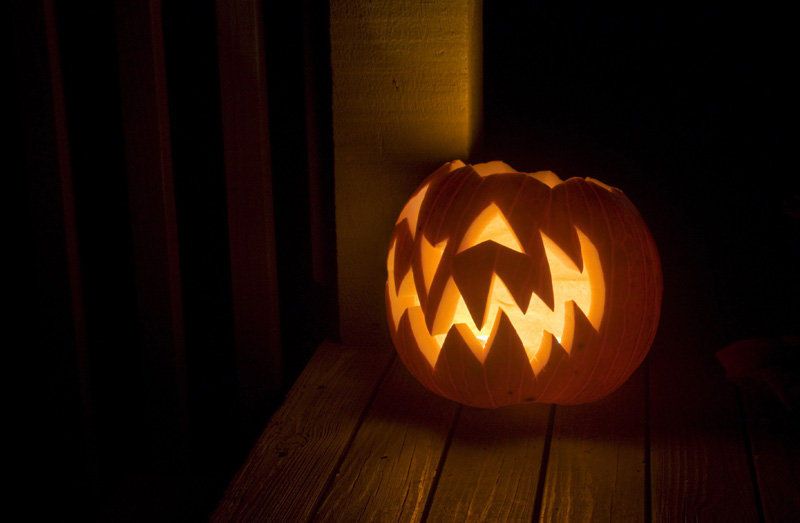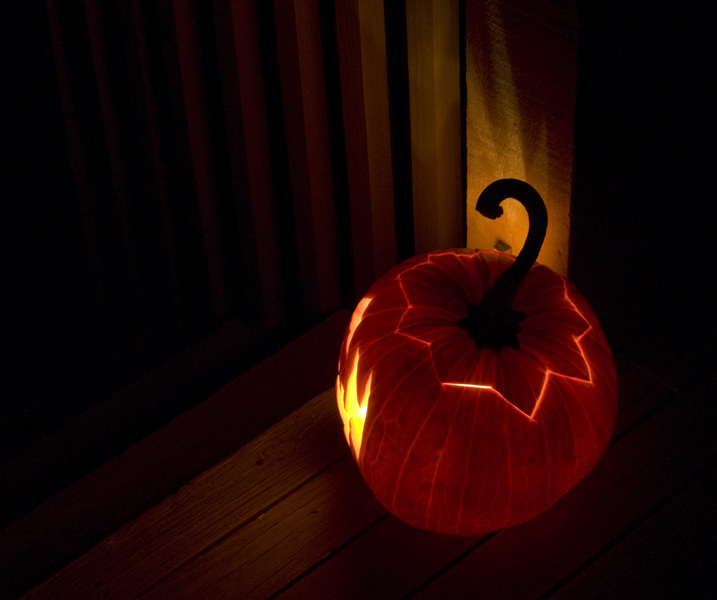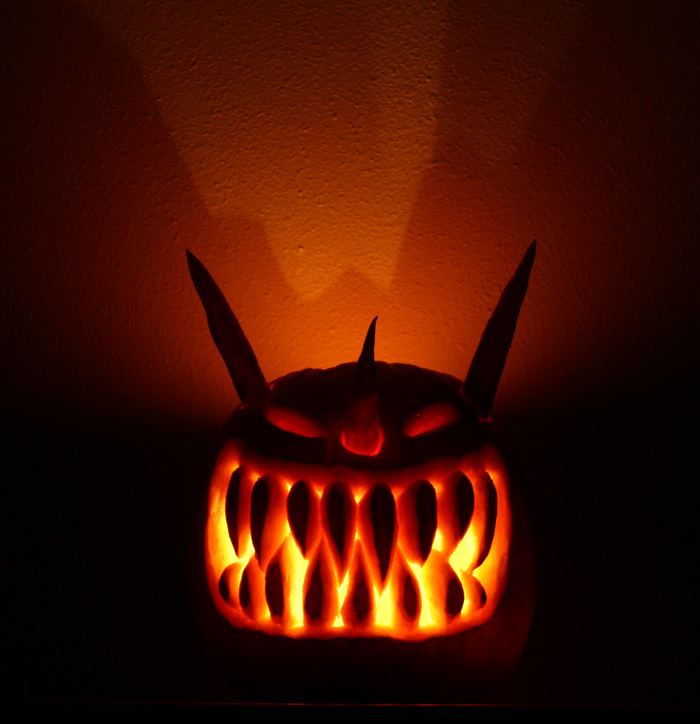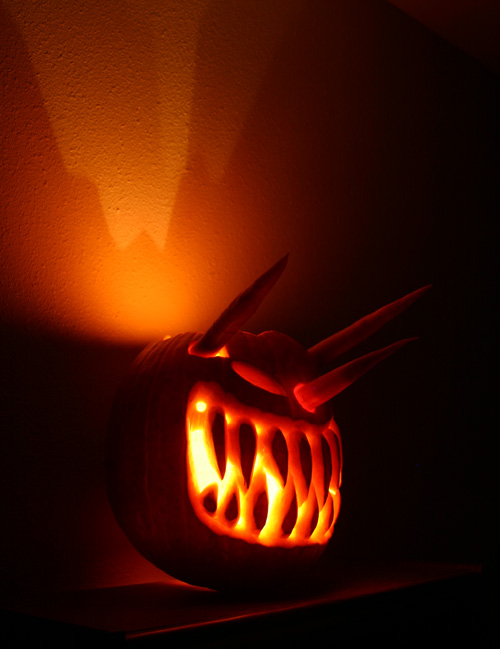
Pumpkin Carving
Halloween is a holiday with a deservedly mixed reputation, but let's just say that it's a guilty pleasure of mine. Pumpkin-carving, in particular, is a tradition that I've always especially enjoyed. I find the aesthetic qualities of a jack-o-lantern to be irresistible - the luminous qualities of the flickering candlelight, the unique mixture of scents from both the pumpkin and the candle, and, of course, the creative element of the design. Morever, a jack-o-lantern can be an aesthetic object in keeping with a common theme of my artwork: duality. The well-crafted jack-o-lantern can be both beautiful and menacing at once.
According to a mixture of legend and history, jack-o-lanterns were first carved in ancient Ireland and Scotland as a means of deterring encounters with unfriendly spirits on the night of October 31st, when it was believed that the dead were able to enter the world of the living. The traditional jack-o-lantern, then, was not intended to invoke evil, but was instead meant to deter evil by frightening spirits away, in case they arrived with ill intent.
The original lanterns of centuries ago were apparently carved from gourds and turnips, since pumpkins were exclusively found in the New World, which had yet to be discovered by Europeans at that time - the use of the pumpkin did not begin until after the immigration of Celtic people to America in relatively recent history, so the modern jack-o-lantern as conceived today is a uniquely American image.
I typically carve a huge mouth that extends all the way across to both sides of the pumpkin - this does leave it vulnerable to caving in under its own weight, so a pumpkin with a strong, thick rind is preferable. I've done many variations on this theme, but all share a preference for straight edges and strong, geometric shapes. Although a pumpkin is suitable for some truly remarkable and intricate surface carving, as in the case of the amazing pumpkins by Ray Villafane, I tend to prefer the more simplistic, traditional cut, primarily intended for display as a form of luminaria after dark:

As a jack-o-lantern purist, I shun the prefabricated designs of store-bought stencils to guide the cutting, so the lantern retains the appearance of a somewhat imperfect cut, which I find aesthetically preferable (one of the few areas of my life in which I willingly accept imperfection). There's even something to be said for the extra character of the slightly aging jack-o-lantern - perhaps two or three days old - when the teeth begin to curl inward a bit as the pumpkin dries:

Occasionally, I'm lucky enough to come across a pumpkin with a rind that's thin enough or soft enough to be quite translucent, which I consider to be a highly desirable quality because the entire object will glow as light passes through the rind:

Here's an especially menacing design from 2007:

This pumpkin had a very thick rind, which allowed me to carve the teeth as deeply 3-dimensional forms. The eyes were not cut all the way through - instead, I retained only a thin layer of rind, so that the eyes have a translucent quality. The horns and nose were created with large carrots, which I whittled down to sharp points. I hollowed out the nose carrot as much as possible, so that the nose would glow a bit, at least near its connection with the face.
